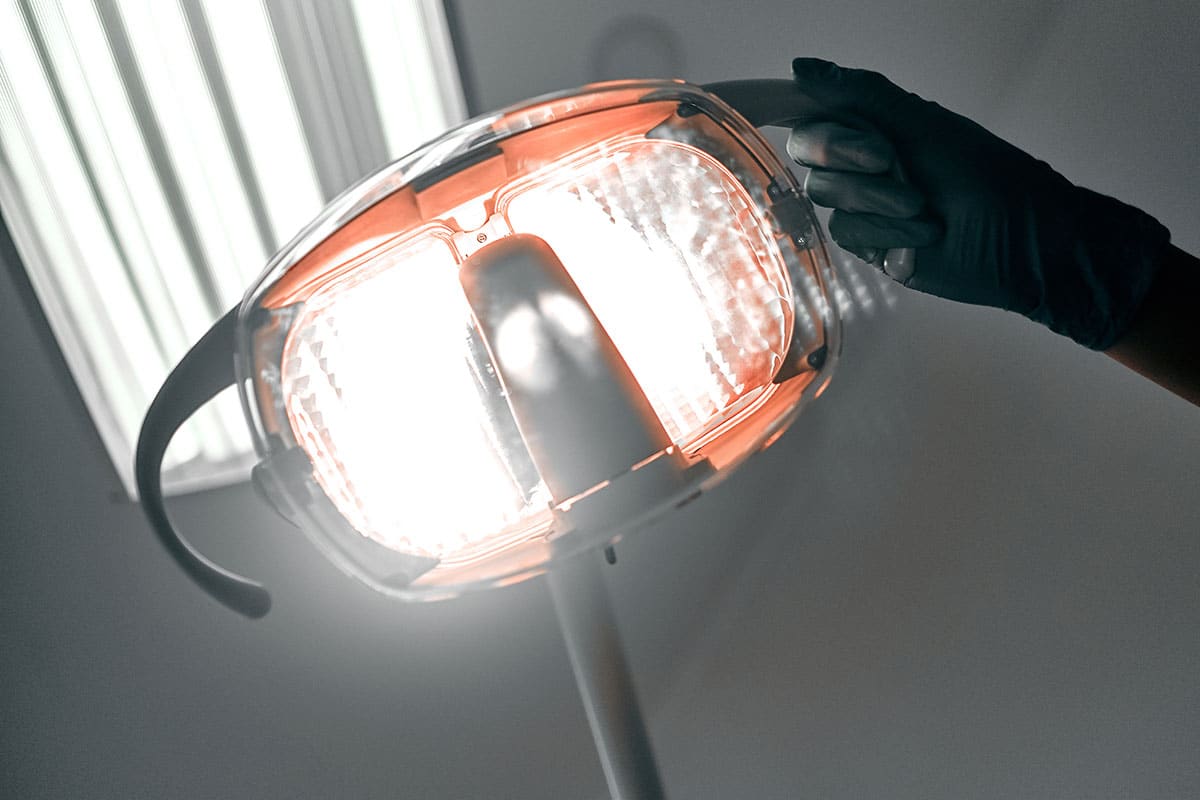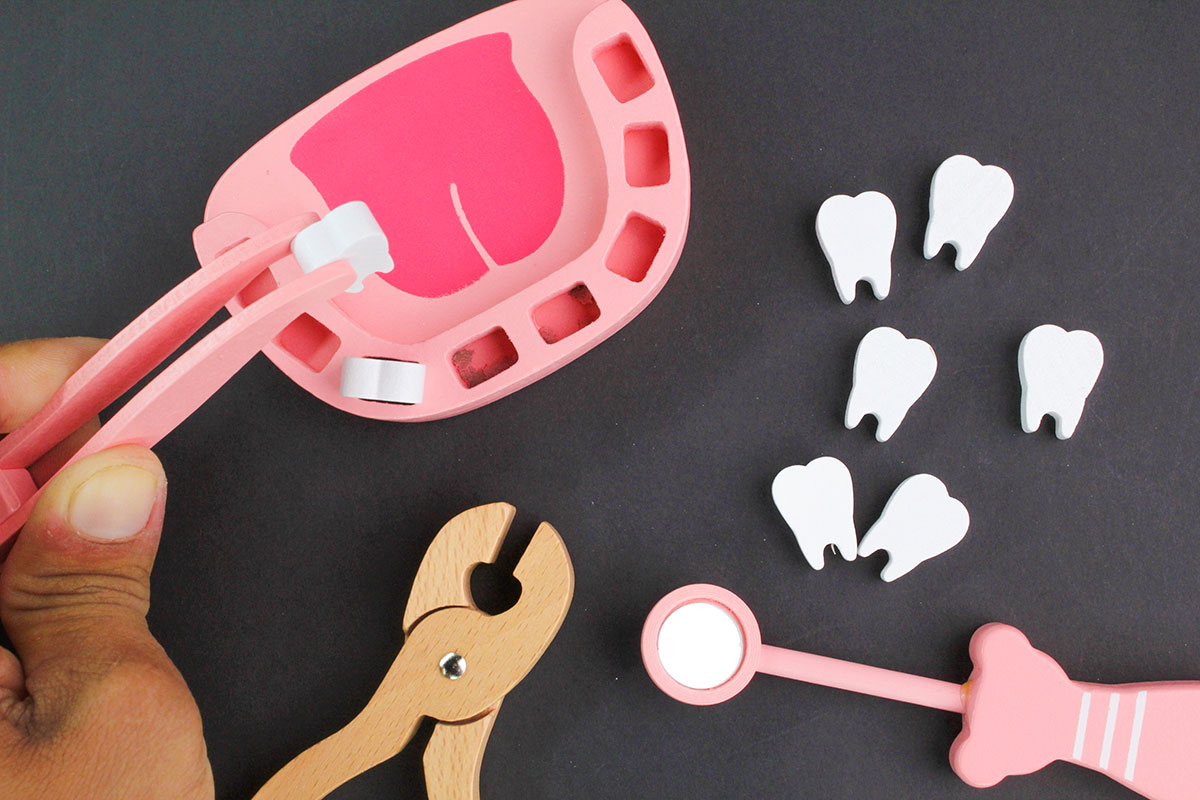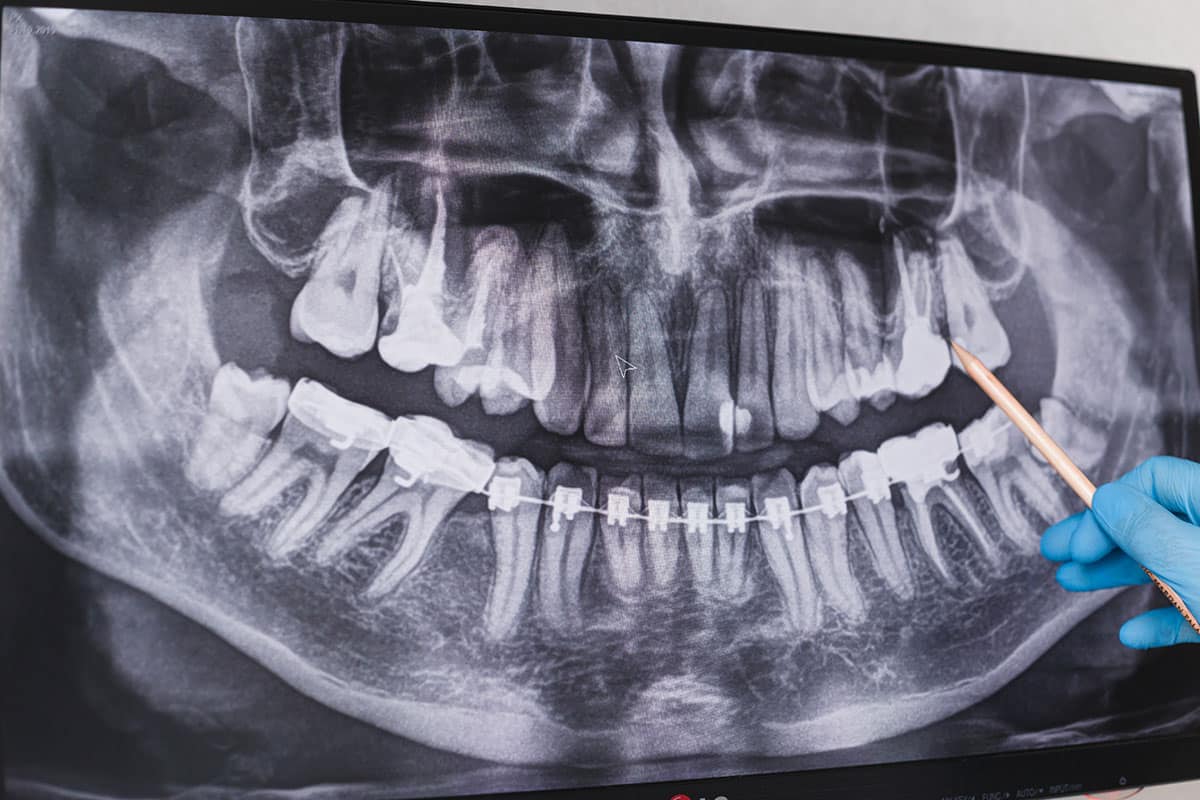This is a question we get asked a lot, and with good reason. It can be difficult to sit still if you’re an active individual, especially because your body might feel fine, even when the extraction site isn’t ready for anything strenuous.
That’s why it’s important to be aware of the factors that play a role in the healing process and to understand the risks associated with exercising prematurely.
Allowing your body to heal properly will minimize the risk of complications to your oral health and also means that you’ll be back in the saddle faster.
Table of Contents
How long should you wait to exercise after tooth extraction?

Of course, active people will want to go and do their thing as soon as possible after having a tooth extracted, but doing so prematurely can lead to complications and lengthen recovery time. It’s a good idea not to exercise after any form of oral surgery, but the recommended waiting period will depend on a number of factors, including:
The severity of the extraction
A tooth extraction is usually a straightforward process, but sometimes oral surgery is required to fully remove a tooth. The latter is common with wisdom tooth removal and will inevitably require a longer healing time than simply pulling a fully erupted tooth.
The type of exercise is being considered
Are we talking about going for a walk or a swim? Or is the goal to go jogging or get back in the gym for weight lifting? Low-impact activities will typically require less recovery time than anything high-impact.
Personal considerations
Our individual healing capabilities are unique, meaning that things like age, health, immune system efficiency etc. will influence how long it takes your body to recover from oral surgery sufficiently. It’s vital to listen to your body before deciding on when to begin exercising or even consulting with your dentist, who will be able to inspect the wound and make a recommendation.
General timelines for beginning exercise after a tooth extraction

Immediate post-extraction period (first 24 hours): It’s recommended to rest and avoid any strenuous physical activity during the first 24 hours after a tooth extraction. This is a critical period when blood clots are forming to help with the healing process. Strenuous exercise can increase blood pressure and disrupt these clots, potentially leading to complications like dry socket.
24 to 48 hours after extraction: In the immediate days following the extraction, you should still avoid vigorous exercise. Gentle activities like walking are generally acceptable, but listen to your body and avoid anything that causes discomfort.
48 hours to one week: After the initial 48 hours, you can gradually begin to reintroduce light exercise. Start with low-impact activities like walking or slow-paced stretching. Continue to avoid anything that may increase blood pressure or put strain on your mouth, such as heavy lifting or high-intensity workouts.
Beyond one week: After about a week, you can typically resume your regular exercise routine, but still be cautious. Pay attention to any discomfort, swelling, or bleeding, and modify your activities accordingly. It’s essential to ease back into your full exercise regimen gradually.
What can happen if you exercise too early after dental work?

Depending on the severity of the dental work and the exercise level, it could be that your body gives you signs that you should stop exercising. If any of the following happens, it’s probably time to stop and let your body recover some more.
- Bleeding (at the site where the dental work took place)
- Increased swelling
- Sutures come apart
- Fever
- Difficulty chewing or talking
- Swollen lymph nodes
- You feel dizzy or light-headed
Stop exercising and call your dentist or doctor if you experience these symptoms and feel they are associated with recent dental work.
Exercising after sedation dentistry
Taking factors like open wounds and dental work out of the equation, is it good to be active after sedation dentistry?
Whether you can exercise after sedation dentistry depends on several factors, including the type of sedation used, the complexity of the dental procedure, and your response to the sedation.
Type of sedation: There are different levels of sedation in dentistry, ranging from mild sedation (like nitrous oxide) to deeper sedation (like intravenous sedation or general anesthesia). The type of sedation you receive will influence your ability to exercise afterward.
Procedure complexity: The nature and complexity of the dental procedure also play a role. If you had a minor procedure like dental cleaning, you might be able to resume exercise sooner than if you underwent a more complex dental surgery.
Individual response: People respond differently to sedation. Some may feel groggy or disoriented after sedation, while others recover more quickly.
In general, it’s advisable to wait until the effects of the sedation have worn off completely before engaging in strenuous exercise. This could take a few hours to a day, depending on the abovementioned factors and your personal comfort level.
How to speed up recovery time after tooth extractions or oral surgery

While waiting for clearance to resume exercise following a tooth extraction, it’s vital to give precedence to your oral health and adhere to the aftercare guidance provided by your dentist. Here are some essential pointers to ensure your healing progresses optimally:
Practice careful oral hygiene
Be gentle when brushing your teeth, using a soft-bristled toothbrush, and being cautious around the extraction site. After meals, rinse your mouth with a warm saltwater solution to maintain cleanliness.
Abstain from using tobacco and alcohol
During the recovery period, it’s advisable to refrain from both smoking and alcohol consumption as they can impede the healing process and heighten the risk of complications.
Manage swelling and discomfort
To alleviate swelling, apply a cold compress to the affected area. You can also use over-the-counter pain relievers as recommended by your dentist to address any discomfort.
Adhere to a soft-food diet
Stick to a diet comprising soft foods such as soups, mashed potatoes, yogurt, and smoothies during the initial recovery phase to prevent undue pressure on the extraction site.
Follow post-operative guidelines
Carefully adhere to any post-operative instructions provided by your dentist, which may include refraining from rinsing or spitting forcefully and avoiding the use of straws.
Schedule a follow-up appointment
Ensure you schedule and attend any follow-up appointments with your dentist to monitor the healing progress and promptly address any concerns or potential complications.
Can I exercise after wisdom teeth removal?

No, patients should not exercise or be active for at least 48 hours after a wisdom tooth removal. The risk of dislodging the all-important blood clot from the empty socket is too significant, and doing so will put patients at greater risk of developing dry socket.
Even a simple wisdom tooth removal procedure will leave a large hole where the tooth once was. This is because wisdom teeth have substantial roots and are firmly anchored into your gum tissue.
Anything that increases your heart rate or blood pressure could put you at risk of complications. That’s also why activities like jogging or anything with some impact are off-limits until your socket begins to heal.
Most patients won’t feel much like exercising after having wisdom teeth removed anyway, as there will likely be some associated swelling, pain and discomfort after the procedure.
Does exercise increase the risk of dry socket?
Dry socket, also known as alveolar osteitis, is a painful dental condition that can occur after a tooth extraction. It typically develops when the blood clot that forms in the socket (the space left in the jawbone after a tooth is removed) is dislodged or dissolves before the healing process is complete. This exposes the underlying bone and nerve endings to air, food particles, and bacteria, leading to pain and discomfort.
Exercising too soon, or too rigorously can cause the blood clot to dislodge, which is a main reason why patients are advised to take it easy for about a week after a tooth extraction procedure.
Frequently asked questions

Can I exercise immediately after having a tooth extracted?
No, it’s important to be sufficiently recovered before exercising after a tooth extraction. Exercising prematurely may heighten the chances of bleeding and swelling and hinder healing.
When can I lift weights after wisdom teeth removal?
For a minimum of one week following a tooth extraction, it’s advisable to steer clear of heavy lifting or strenuous weightlifting routines. Avoid heavy lifting and anything that may increase your heart rate and blood pressure.
Is it ok to swim after a tooth extraction?
Swimming, generally a low-impact activity, can typically resume after a tooth extraction. However, it’s vital to exercise caution and refrain from submerging your head underwater or participating in activities that might risk accidental impact to the surgical site.
After a tooth extraction, when can I reintroduce intense workouts like running or HIIT?
A prudent approach involves waiting at least one to two weeks before gradually reintroducing demanding workouts such as running or high-intensity interval training (HIIT). Always pay attention to your body’s signals and seek advice from your dentist tailored to your unique circumstances.
On the contrary, doing HIIT workouts before oral surgery can help speed up your recovery time. So do the exercising before, not after, your procedure.
What are the risks of exercising too soon after a tooth extraction?
Exercising too soon after tooth extraction can pose several risks and complications, including bleeding, swelling, pain, and delayed healing. If you have sutures, they could also be damaged. The main risk is having the blood clot inside the socket detach, which can lead to dry socket.
What should be done if I encounter severe pain or complications following exercise post-tooth extraction?
In the event of severe pain, excessive bleeding, swelling, or any concerning symptoms after exercising, it’s imperative to promptly reach out to your dentist for a thorough evaluation and expert guidance.
When is it safe to participate in contact sports after a surgical tooth extraction?
To mitigate injury risks and avoid disruptions to the healing process, it’s typically recommended to wait for a minimum of four to six weeks before resuming participation in contact sports. Seek personalized advice from your dentist or oral surgeon to ensure your safety and well-being.
Check us out on Facebook and Twitter for daily information about Oral Health from Martindale Dental, or visit our offices in Hamilton and St. Catharines.
Have more questions?
Please contact us for all inquiries or to book an appointment with one of our convenient clinic locations. We look forward to hearing from you.




